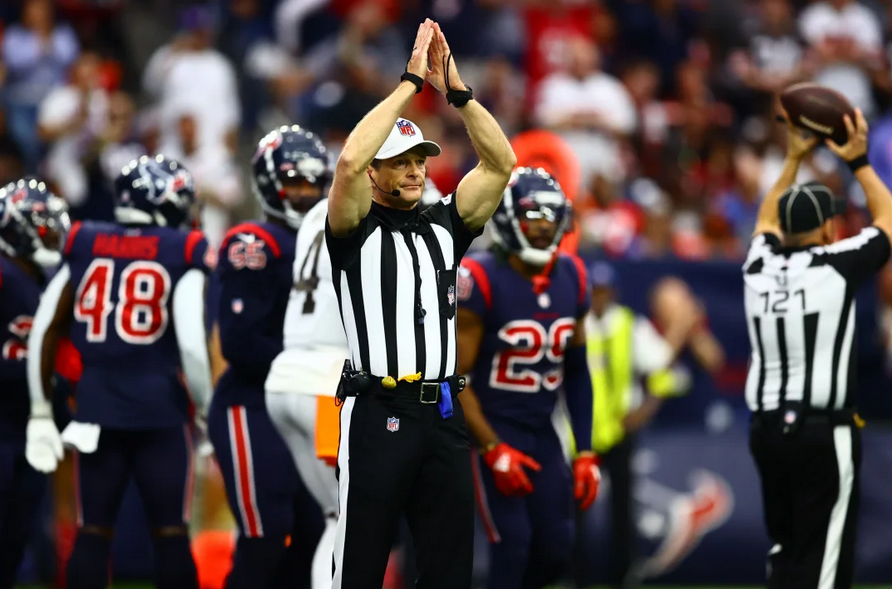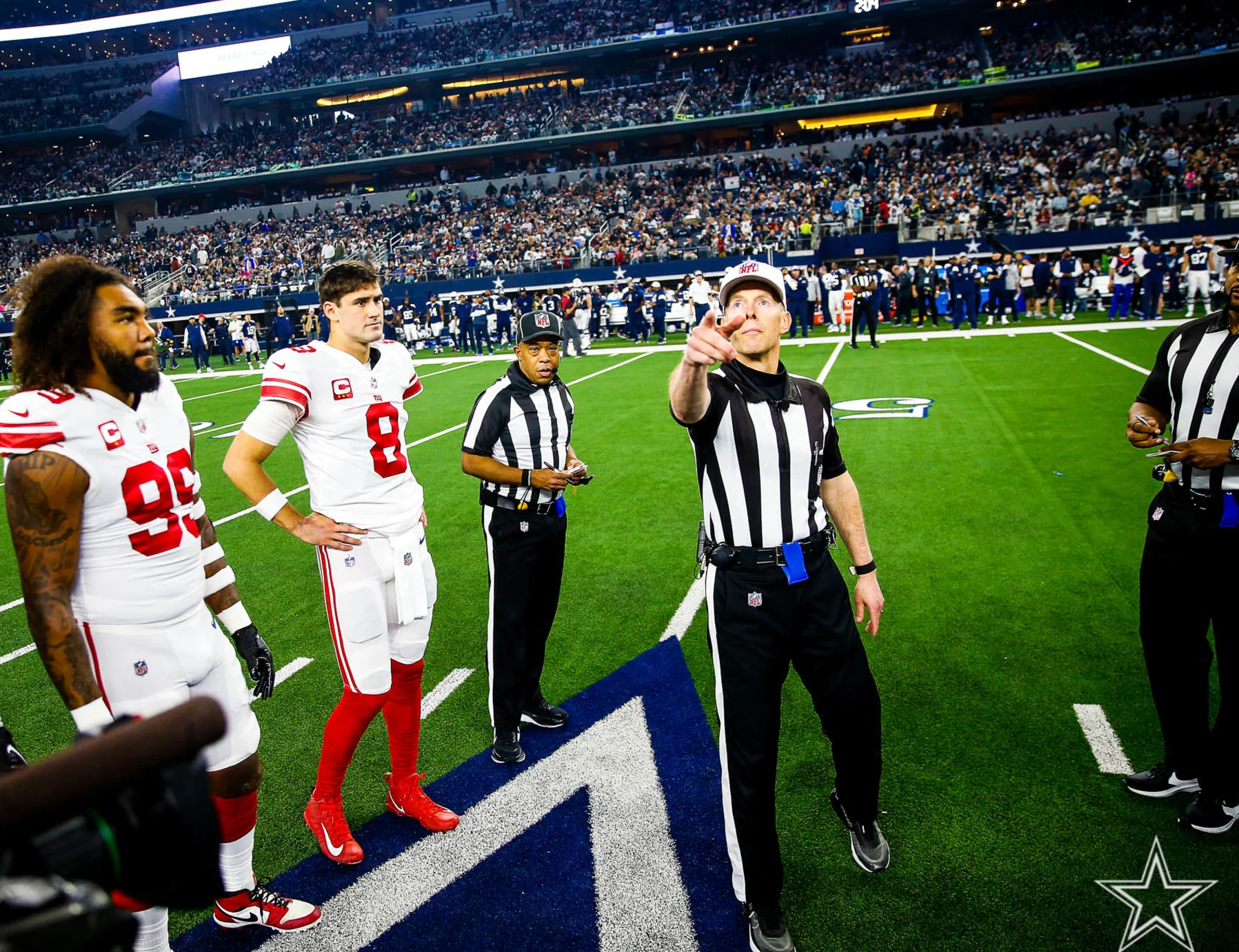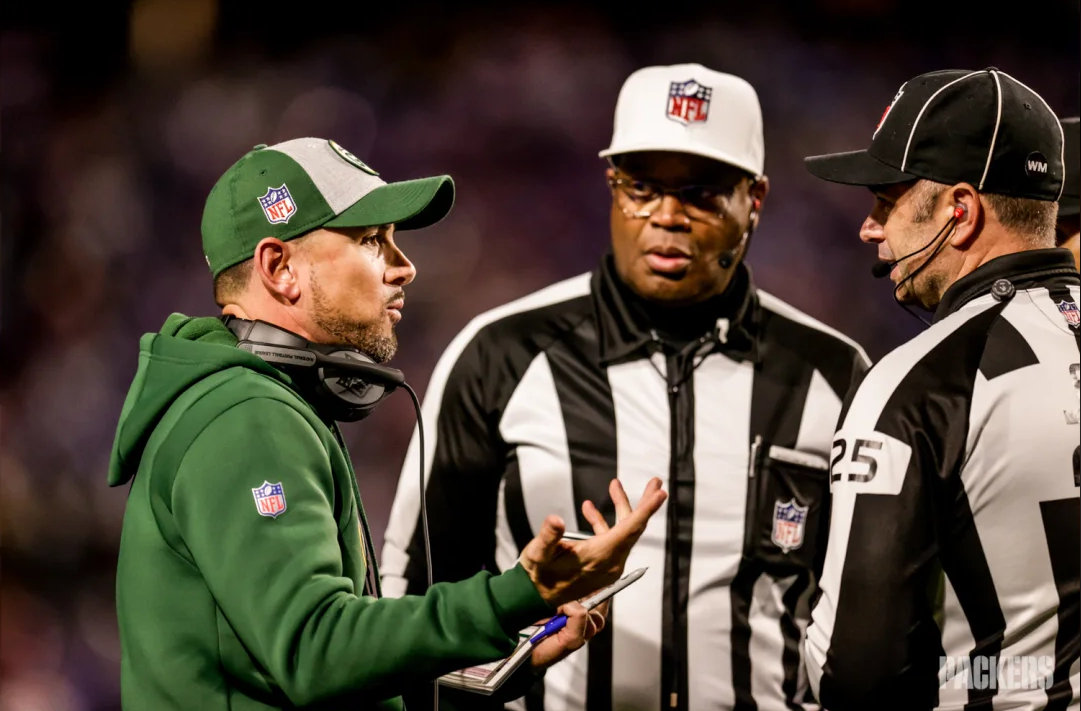Mechanics
What has 7 people and 30 feet? The football chain crew
They never make a big call. The camera never focuses on them unless they get hurt. They constantly have to work around players and coaches. If danger comes their way, they are expected to drop their equipment and run. Many time they are pinned between players on the sideline and the play crashing out of bounds and get smacked around.
Yet, without them the game would be chaos. No first down can be declared without them.
They are the chain gang, an important part of football since 1906, when the line-to-gain was established as 10 yards for every series of downs (back in the days when touchdowns were 5 points and field goals were 4).
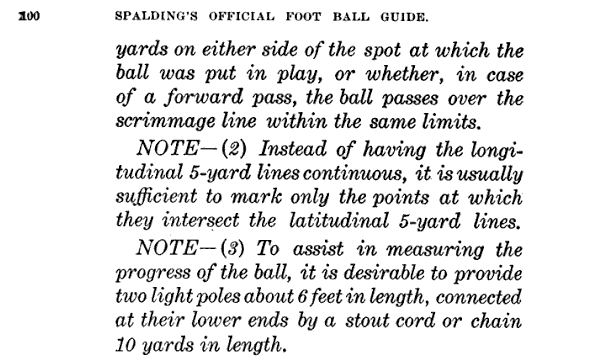
While it may look like a simple job, they have precise duties. Many chain gang members are local high school football officials and work hard to make their brothers’ (and sisters’) jobs easier.
The chain gang actually features seven people: two to hold the chain stakes (rod men), a down box operator (box man), someone to run the marking clip (more on that coming up), and someone to handle the red first down mat (that red strip to mark the line-to-gain). On the other side of the field is an auxiliary down box operator and another person running an auxiliary line-to-gain stake and the mat.
The chains work with the down judge and the auxiliary equipment works with the line judge.
Before the game, the down judge and line judge meet with chain gang working on their side of the field. The mechanics are the same for each down judge, but there are a few idiosyncrasies each down judge has, which is discussed with the crew in pregame meetings. The down judge also conducts a pregame inspection of the chain, which also serves as a spot check on the accuracy of the field lines. He will also check for a piece of tape at the halfway interval for assistance in penalty enforcement.
Once the game kicks off each person does their part to make the game run smoothly. In the NFL, the clock does not stop on a first down, so when the offense gets a new first down, the chain gang moves quickly, but only when the down judge gives them the signal (and at that after the referee signals first down). They don’t want to slow the game down. When the offense gets successive first downs, the chain gang has to move even quicker. The chain gang has to be in good shape to cover a NFL game!
The people holding the down boxes and the chain stakes have to be alert. If the play comes their way, they are encouraged to stay safe. If they are in danger, they are to lay (or drop, depending on the urgency) the poles down and get out of the way. They lay the poles down because those poles and the chain can injure players.
 What happens when the crew drops the poles and run? That’s where the clip comes in. The clip is affixed to a 5-yard stripe in the middle of the chain, allowing it to be reset quickly. This is also the marker that sets the poles in the field during a measurement and when field direction changes at the end of the first and third quarters. There are at least two, possibly three clips on the chain, in case an instant replay reversal wipes out a first down and the chains are reset to the previous spot. The person running the clip also keeps track of every play in the game. For every snap he records the down, distance, yard line, where between the hashes the ball is located, and the yard line where the clip is located in case the the chains have to be reset. Inside 2 minutes of the first half and 5 minutes of the second half, the time is also recorded by the clip person. A data card is attached to the down box to track down, distance, and yard line in decimals.
What happens when the crew drops the poles and run? That’s where the clip comes in. The clip is affixed to a 5-yard stripe in the middle of the chain, allowing it to be reset quickly. This is also the marker that sets the poles in the field during a measurement and when field direction changes at the end of the first and third quarters. There are at least two, possibly three clips on the chain, in case an instant replay reversal wipes out a first down and the chains are reset to the previous spot. The person running the clip also keeps track of every play in the game. For every snap he records the down, distance, yard line, where between the hashes the ball is located, and the yard line where the clip is located in case the the chains have to be reset. Inside 2 minutes of the first half and 5 minutes of the second half, the time is also recorded by the clip person. A data card is attached to the down box to track down, distance, and yard line in decimals.
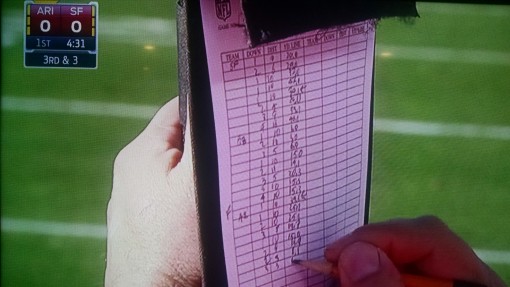 Don’t think the operator of the auxiliary down box gets a vacation. There is a piece of tape attached to the auxiliary box. The person running the box keeps track of the penalties: infraction, number of offender, who called the foul, the yardage marked off, quarter and time. The line judge then confers with the auxiliary box person during a break to update his game card. When the quarter is winding down, box operators can count the clock down when a snap is near the expiration of time or the two-minute warning.
Don’t think the operator of the auxiliary down box gets a vacation. There is a piece of tape attached to the auxiliary box. The person running the box keeps track of the penalties: infraction, number of offender, who called the foul, the yardage marked off, quarter and time. The line judge then confers with the auxiliary box person during a break to update his game card. When the quarter is winding down, box operators can count the clock down when a snap is near the expiration of time or the two-minute warning.
The down judge and line judge switch sidelines after halftime, and the primary and auxiliary crews do so as well.
The chain gang is supplied by the home team. While the chain gang might enjoy a home team win, they must not cheer or make any other partisan displays.
If a chain gang member gets confused on the down any other aspect of the line to gain, they can inquire of the down judge or line judge. But, the chain gang does not have the authority to make a ruling on the down. They can assist the officiating crew with information — and, recently, the league office authorized the chain crew to speak up in the case of an egregious error, especially as it pertains to downs — but only the game officials can make a ruling.
There have been calls to put computer chips in footballs and lasers on the field to measure for a first down, but the chains have endured well over 100 years, making it older than the NFL itself.
The fairly simple way to tell if the offense has made a first down has evolved into a pretty sweet science and the chain gang serves as a valuable asset to each game.
[Updated to reflect the down judge position and to remove the drive-start indicator, a position that is no longer used.]




















